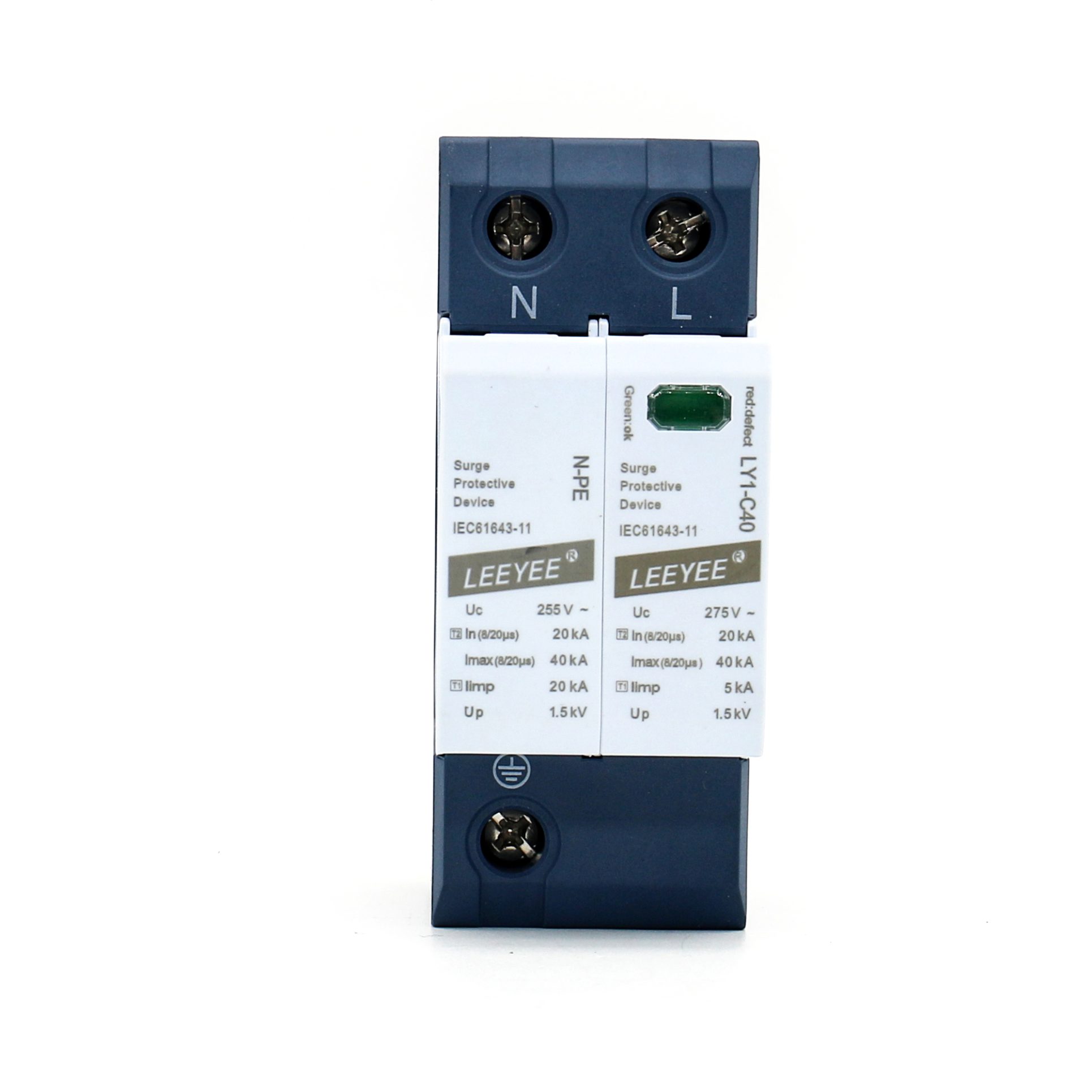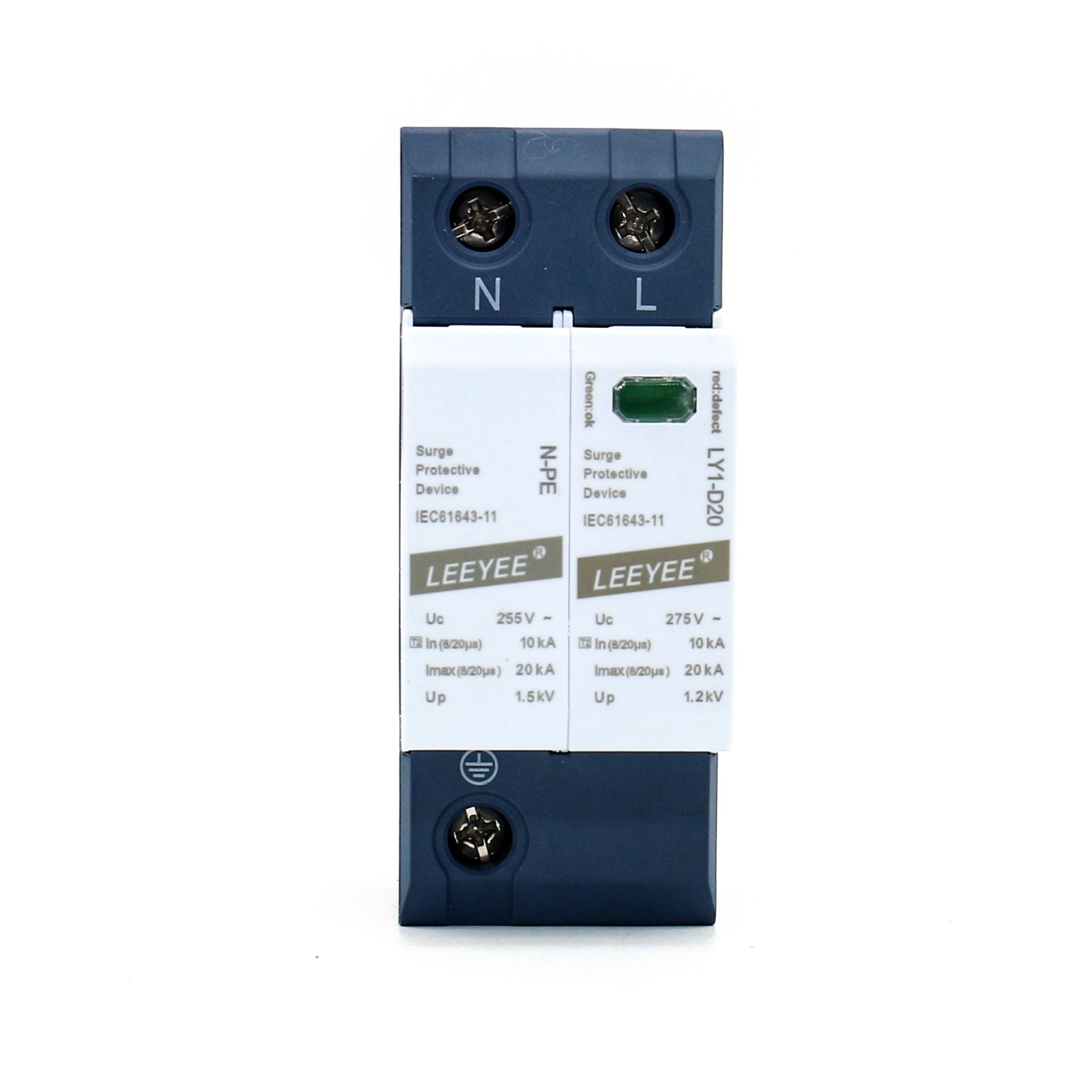Table of Contents
Introduction
In today’s society, the stability and safety of electricity are crucial. With the rise of smart homes and various electronic devices, the use of single-phase power sources has become increasingly common. However, these power sources face many potential threats, particularly voltage surges. Voltage surges can not only damage electrical equipment but also lead to property damage and safety hazards. Therefore, the use of single-phase surge protectors (SPDs) has become particularly important. This article will provide a detailed introduction to the working principle, types, selection criteria, installation, maintenance, and necessity of single-phase surge protectors.
Basic Knowledge of Single-Phase Power Supply
Single-phase power supply is the most common form of power supply, typically consisting of two conductors: the phase wire (live wire) and the neutral wire. The voltage of single-phase power supply is usually 220V or 110V, which is widely used in households and small commercial environments.
The Working Mechanism of Single-Phase Power Supply
A single-phase power supply drives electrical equipment through the voltage difference between the phase and neutral lines. Current flows between these lines, creating a voltage difference that powers electrical devices. Although the simple design of single-phase power sources makes them highly effective for small power demands, it also brings risks of voltage fluctuations and surges.
Why Single-Phase Power Supplies Require Surge Protectors
Despite their simplicity and ease of use, single-phase power supplies are vulnerable. Here are several reasons why single-phase surge protectors are essential:
- External Factors: Lightning strikes, power grid interference, and equipment startup can cause transient voltage surges, potentially exceeding the tolerance range of electrical equipment and leading to damage.
- Equipment Sensitivity: Many modern devices, such as computers and televisions, are highly sensitive to voltage fluctuations. Surges can result in data loss or equipment failure.
- Safety Hazards: Severe voltage surges can not only damage equipment but may also cause safety incidents like fires. Therefore, safeguarding electrical systems is critical.
Understanding Voltage Surges
A voltage surge refers to a sudden and significant increase in voltage, often caused by:
- Lightning Strikes: Lightning can directly hit power lines or nearby buildings, causing instantaneous high voltage.
- Startup and Shutdown of Equipment: Large motors and transformers can generate current surges during startup or shutdown, leading to voltage fluctuations.
- Short Circuits: A short circuit in a circuit can cause instantaneous high current, resulting in a voltage spike.
The Impact of Surges on Equipment
The effects of voltage surges on electrical equipment are significant and can include:
- Equipment Damage: Excessive voltage can exceed the equipment’s rated tolerance, resulting in component burnout.
- Data Loss: Digital devices, such as computers, may suffer data corruption or loss due to voltage fluctuations.
- Reduced Equipment Lifespan: Frequent surges can gradually age equipment, shortening its service life.
Working Principle of Single-Phase Surge Protectors
The primary function of a single-phase surge protector is to safeguard electrical equipment from voltage surges. Its working principle involves:
- Monitoring Voltage: The SPD continuously monitors the voltage level in the circuit. When the voltage exceeds a preset threshold, the SPD activates immediately.
- Conducting Excess Voltage: Upon detecting excessive voltage, the surge protector’s internal components, such as a Metal Oxide Varistor (MOV) or Gas Discharge Tube (GDT), quickly conduct the excess voltage to the grounding line.
- Restoring Normal State: Once the voltage returns to the normal range, the surge protector automatically resets and resumes standard operation.
Key Components of Single-Phase Surge Protectors
The core components of a single-phase surge protector typically include:
- Metal Oxide Varistor (MOV): Conducts when the voltage exceeds a set value, diverting excess voltage to the ground.
- Gas Discharge Tube (GDT): Handles transient high voltages, providing additional protection.
- Filter: Some high-end surge protectors come with filters to suppress high-frequency noise for further equipment protection.
Types of Single-Phase Surge Protectors
Single-phase surge protectors can be classified based on installation location and function:
- Type 1: Installed at the power input, suitable for industrial and commercial environments, providing protection before power enters a building.
- Type 2: Installed in a distribution panel to protect branch circuits, ideal for homes and small offices.
- Type 3: Installed near sensitive devices, offering ultimate protection for computers, televisions, and other electronics.
Choosing the Appropriate Type of Single-Phase Surge Protector
Choosing the right type of single-phase surge protector is crucial. While Type 1 is suitable for large-scale protection, Type 2 and Type 3 are better for device-specific protection. Selecting the appropriate type based on actual needs ensures optimal protection.
Key Factors for Selecting a Single-Phase Surge Protector
When choosing a suitable single-phase surge protector, consider the following key factors:
- Rated Voltage: Ensure the surge protector’s rated voltage matches your power system (common values are 220V and 110V).
- Surge Current Capacity: Ensure the surge protector can handle possible instantaneous currents, usually expressed in kiloamperes (kA).
- Response Time: A surge protector with a quick response time offers better protection.
- Installation Location: Select an appropriate installation location based on your electrical system layout for effective circuit protection.
Installation and Maintenance
Proper installation and regular maintenance are key to ensuring the effectiveness of single-phase surge protectors.
Installation Guide
- Choose Installation Location: Install the surge protector at the power inlet or near sensitive equipment for optimal protection.
- Compliance with Standards: Follow electrical installation standards and manufacturer guidelines during installation.
- Grounding: Ensure proper grounding of the surge protector to enhance protection effectiveness.
Maintenance Suggestions
- Regular Inspection: Frequently check the surge protector’s status to ensure normal operation. Monitor indicator lights for any faults.
- Replacement Cycle: Surge protectors may need replacement after experiencing a certain number of surges; regular checks are recommended.
- Record Maintenance: Keep maintenance records to track the status and history of the equipment.
Application Examples
Single-phase surge protectors have a wide range of applications in both household and commercial environments, including:
- Home Applications: Protect televisions, computers, refrigerators, and other sensitive household appliances from voltage fluctuations.
- Business Environment: Safeguard POS machines, servers, and other critical equipment to avoid property damage from voltage surges.
- Industrial Applications: Protect large motors, transformers, and other vital equipment to improve operational efficiency and reduce downtime.
Frequently Asked Questions
Can single-phase surge protectors protect all devices?
Answer: While SPDs can effectively protect most electrical equipment, it is essential to choose the appropriate protector based on the type of equipment. For high-value and sensitive devices, high-performance surge protectors are recommended.
How do I know if my device needs surge protection?
Answer: If your device is sensitive to voltage fluctuations or is a valuable electronic device, using surge protectors is advisable. This is especially crucial for devices used for data processing.
What is the service life of surge protectors?
Answer: The service life of surge protectors depends on their design and usage environment. Generally, it is best to check and replace them every few years to ensure reliability.
Conclusion
Single-phase surge protectors play a vital role in protecting electrical equipment from voltage surges. By selecting and installing these protectors appropriately, we can effectively extend the service life of our equipment and ensure its safe operation. As electronic devices continue to proliferate, the importance of surge protectors will only increase. Therefore, equipping appropriate surge protectors is a key step toward ensuring electrical safety when using single-phase power sources.
Contact Us
If you have any further questions about single-phase surge protectors or need assistance in selecting and installing suitable equipment, please feel free to contact us at any time. Our professional team is always ready to provide support and advice! Ensure the safety and worry-free operation of your electrical equipment through reasonable selection and installation.


